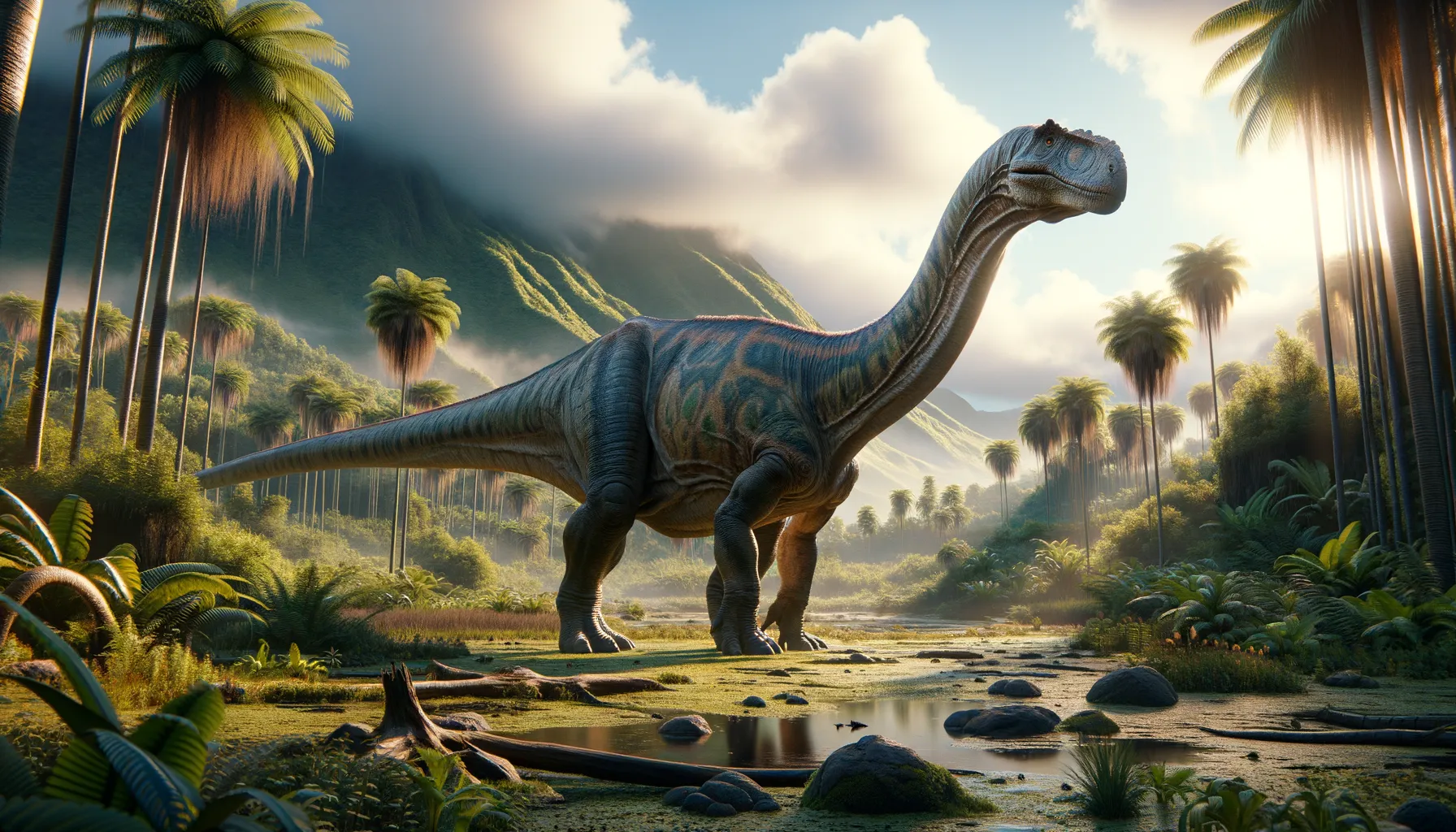
Bashunosaurus
Ancient giant of the Late Cretaceous age!
Period
Cretaceous
Length
Approximately 60 feet long.
Height
Around 20 feet tall at the shoulder.
Weight
Approximately 20 tonnes.
Bashunosaurus was a remarkable sauropod dinosaur that roamed the earth during the Late Cretaceous period, notable for its enormous size and long neck. It was a herbivorous giant, moving slowly through the lush vegetation of ancient ecosystems. Its fossils primarily found in China have provided insightful glimpses into the life of these majestic creatures. Known for its significant contribution to our understanding of sauropod evolution, Bashunosaurus continues to captivate paleontologists and dinosaur enthusiasts alike.
Diet
Bashunosaurus was a herbivore. It primarily fed on high-growing vegetation, which it reached with its long neck. Its diet likely consisted of leaves, ferns, and other soft plants.
Hunting
As a herbivore, Bashunosaurus did not hunt. Instead, it foraged through forests and open landscapes. Its size protected it from most predators.
Environmental challenges
Bashunosaurus faced numerous environmental challenges, including changes in climate that could affect the availability of food. Predation by large carnivorous dinosaurs may have been a threat to young or injured individuals. Competition with other herbivores for resources was another potential challenge. Adapting to a changing landscape required resilience and resourcefulness.
Speed
Slow, due to its massive size.
Lifespan
Estimated at several decades.
First discovery
Uncovered in the Bashu region of China.
Fun Facts
- Bashunosaurus was a dinosaur that lived approximately 100 million years ago during the Middle Cretaceous period.
- It was a member of the sauropod family, known for its long neck and tail, much like the famous Brachiosaurus and Apatosaurus.
- Fossils of Bashunosaurus have been discovered in present-day China, specifically in the Sichuan Province.
- The name 'Bashunosaurus' means 'Bashu lizard,' referencing the ancient name of the region where it was found.
- Bashunosaurus was a herbivore, feeding on the lush plants available during its time period.
- Despite its massive size, the Bashunosaurus likely moved in herds for protection against predators.
- The discovery of Bashunosaurus adds valuable information about the diversity and evolution of sauropods in Asia.
Growth and Development
Bashunosaurus experienced rapid growth during the early years of its life. As it matured, growth rates slowed but continued steadily until reaching full size. This dinosaur depended on a stable food supply to fuel its growth. Social structures, such as herding, may have helped protect young Bashunosaurus as they developed.
Habitat
Bashunosaurus inhabited lush, vegetated regions that provided ample food. It likely preferred relatively flat areas where its massive size was manageable. Rivers and lakes may have been crucial water sources in its environment. These habitats supported diverse ecosystems with a variety of plant species.
Interaction with other species
Bashunosaurus coexisted with various dinosaur species, including other herbivores and large carnivores. Its immense size likely deterred many predators from attempting attacks. It may have engaged in competitive behaviors with other herbivores over food resources. Symbiotic relationships with smaller scavengers could have existed, benefiting each other indirectly.
Natural lifespan
Its natural lifespan was likely several decades.
Reproduction
Reproduction occurred through egg-laying, as with other dinosaurs. Eggs were likely laid in nests, potentially guarded by one or both parents. Hatchlings were precocial, meaning they could move about shortly after birth. Growth was rapid during early life stages to help young individuals avoid predation.
Social behaviour
Bashunosaurus may have exhibited social behavior, possibly moving in herds. This behavior would provide protection from predators, especially for younger members. Herding could also facilitate access to food sources. Social structures may have supported communication among individuals.
Fossil locations
Fossils of Bashunosaurus have primarily been discovered in the Bashu region of China. These fossils have been crucial in understanding sauropod diversity in Asia. Excavations have revealed both adult and juvenile specimens. The findings have contributed to the broader knowledge of Cretaceous period ecosystems.
